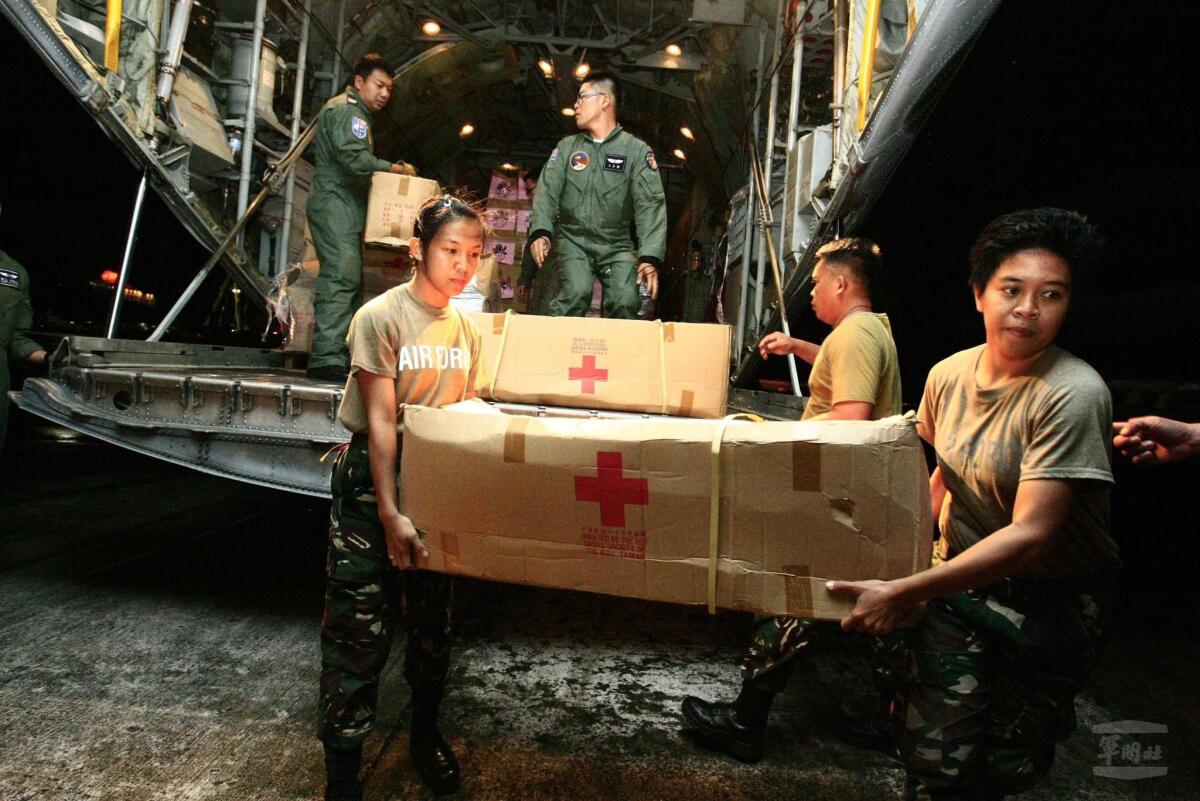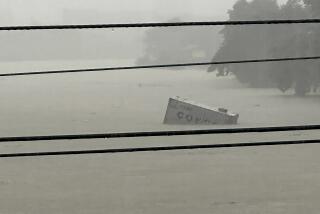U.S. aircraft carrier arrives in Philippines for typhoon relief effort

- Share via
CEBU, Philippines -- With pressure mounting to speed up the distribution of aid to victims of Typhoon Haiyan, the U.S. aircraft carrier George Washington and its strike group arrived Thursday in the Philippines, and officials said relief flights could take place around the clock at two airports.
The carrier and two cruisers will take up position off the eastern coast of Samar island to assess damage, provide logistical support and deliver medical and water supplies, the 7th Fleet said in a statement. The strike group also brings 21 helicopters, which will help to reach areas cut off by the monster storm that ripped through the central Philippines late last week.
At a military air base in the city of Cebu, which serves as the hub for relief efforts, officials said night flights had begun in hard-hit Tacloban, on the island of Lyete, and were also possible at the Guiuan air field, a logistics center on Samar. Previously, flights were limited to the daylight hours because of insufficient lighting and personnel to operate at night.
Cebu airport was a hive of activity Thursday, as cargo planes took off with supplies and personnel from countries such as Israel, Indonesia and Taiwan, and returned with some of the desperate people who line up every day in Tacloban to try to get a flight out of the disaster zone.
“The operations tempo is increasing,” said Lt. Gen. Roy Deveraturda, who heads the Philippine armed forces central command. “We have airlifted and delivered more than 1.8 million pounds of relief goods, food, water and medicine.”
Fourteen Red Cross trucks arrived in Tacloban on Thursday, he said. But many more remote areas had yet to see any of the boxes piling up at the airfield. Roads were still being cleared of debris, more helicopters were needed and severed communications were making it difficult to coordinate deliveries with local leaders, officials said.
The United Nations said 4,460 people were confirmed dead from last week’s typhoon, known by Filipinos as Yolanda, the Associated Press reported.
Decaying bodies still lay in the streets in Tacloban, six days after the storm hit. The city held its first mass burial Thursday for scores of victims.
U.N. humanitarian chief Valerie Amos, who toured the city Wednesday, said tens of thousands of people were living in the open, exposed to the rain and wind.
“The situation is dismal,” she told reporters in the capital, Manila, on Thursday, according to the AP. “I think we are all extremely distressed that this is Day 6 and we have not managed to reach everyone.”
ALSO:
Afghan opium crop soared this year, U.N. says
Battle against corruption failing across Africa, survey finds
2 Nigerian groups added to U.S. list of terrorist organizations
Twitter: @alexzavis
More to Read
Sign up for Essential California
The most important California stories and recommendations in your inbox every morning.
You may occasionally receive promotional content from the Los Angeles Times.













